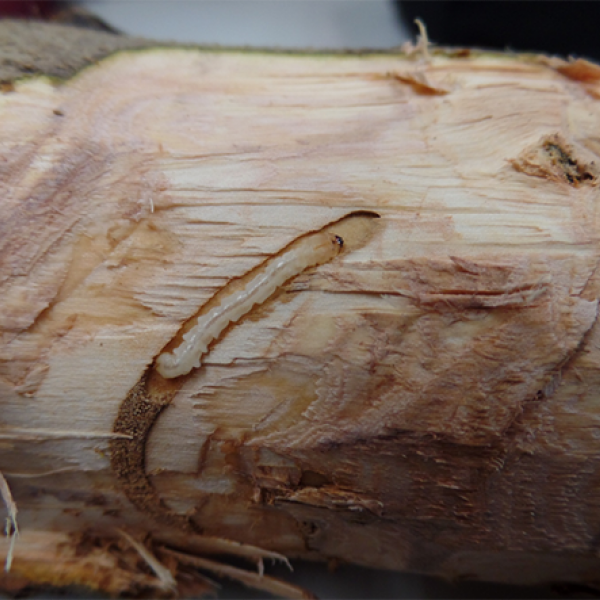
News Source
Last fall, researchers at Wright State University announced they had found that emerald ash borer can develop from larvae to adulthood on a species of olive tree. Today, that study is published online in the Journal of Economic Entomology.
Their detailed report shows that 45 percent of the emerald ash borer (Agrilus planipennis) eggs that hatched and entered olive tree stems were recovered alive during the experiment, either as larvae during periodic debarking, as prepupae or pupae, or as adults. “The level of success observed, while lower than on susceptible North American ash trees or even white fringetree, appears to be higher than their level of success on some of their native hosts, like Manchurian ash,” says Don Cipollini, Ph.D., professor of plant physiology and chemical ecology at Wright State and lead author of the study.
Cipollini and Ph.D. students Chad Rigsby (now in a postdoctoral position at the University of Rhode Island) and Donnie Peterson tested emerald ash borer (EAB) on cultivated olive (Olea europea) following the discovery that it could attack white fringetree (Chionanthus virginicus) in 2014. The experiment used cut stems of the Manzanilla cultivar of olive tree and was conducted in a lab setting. Now, Cipollini and students are testing for EAB vulnerability on potted live olive trees, other olive cultivars, and other tree species closely related to olive and fringetree.
Some of the emerald ash borer larvae that hatched from eggs and entered olive trees in an experiment at Wright State University reached adulthood, such as this one shown above emerging from an olive stem. (Photo credit: Don Cipollini, Ph.D.)
The EAB eggs used in Cipollini’s experiments have come from adults reared on ash in a U.S. Department of Agriculture laboratory, meaning they’ve had no previous exposure to olive or white fringetrees. “Thus, I think we are revealing the innate potential of EAB to use alternate hosts. Moreover, in the field, EAB has likely never encountered olive trees—at least in North America— and there are not enough white fringetrees in the currently invaded range in the Midwest and Northeast to have exerted very strong selection,” he says. “While EAB can clearly find and utilize white fringetrees in the field already, that ability could increase with time. That could be true for olives too as they begin to contact them in the wild.”
EAB, native to Asia, arrived in North America in 2002 near Detroit and has spread as far as Colorado, Texas, New Hampshire, and Quebec in the time since, devastating millions of ash trees in forests and communities along the way. “If EAB can detect and utilize olive trees in the field, it would take it from being primarily a forest and landscape pest to a potential crop tree pest,” Cipollini says.
